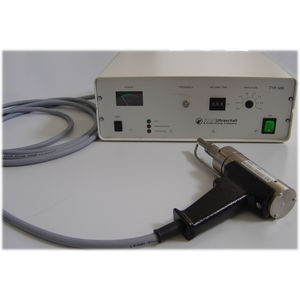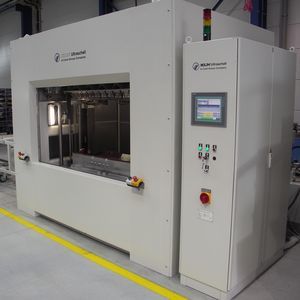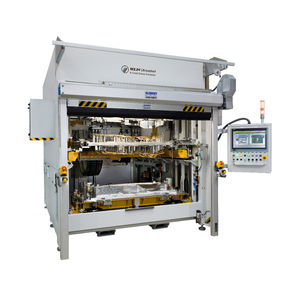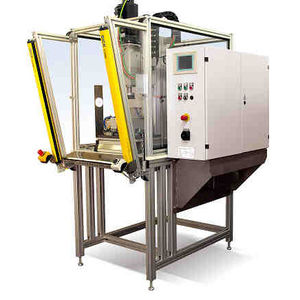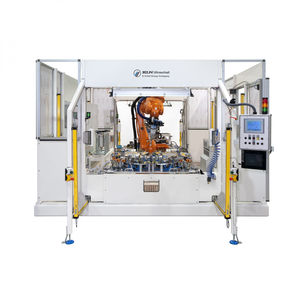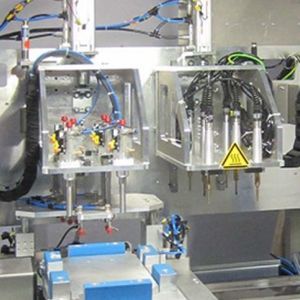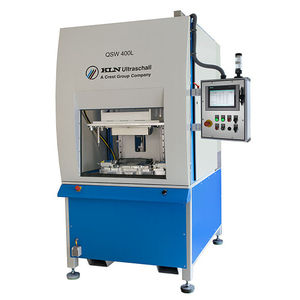
Pneumatic riveting machine automatic





Add to favorites
Compare this product
Characteristics
- Operation
- pneumatic
- Other characteristics
- automatic
Description
The ultrasonic riveting makes possible an interlocking bonding of two thermoplastics or of thermoplastics with dissimilar materials, e. g. thermoset materials or metals.
In this process the sonotrode serves as a re-forming tool. It determines the forming of the riveting pin.
During the holding time (cooling phase) the sonotrode serves also as fixation stamp, thus the melted material cools down under pressure.
solid and seamless fitting joint by overcoming the return elasticity of the plastic material
short process times
low-stress bondings
quick thermal drain via the cold sonotrode; the sonotrode simultaneously serves as fixation stamp
also deeper areas of a plastic component can be reached with the riveting sonotrodes
reproducible bolding technology; dissimilar materials can be riveted
use of basic sonotrodes with screw-in riveting sonotrodes; thus several riveting steps are possible with one head
no connection elements
Disadvantages of ultrasonic riveting:
Long process times and short cycle sequences lead to warming up of the riveting sonotrode. Here the sonotrode tip should be ventilated.
Electronic components are very sensitive against ultrasonic waves. It can lead to destruction of the elements.
If the parts to be riveted have thin walls, the visible side can show shiny spots and imprints
If the parts to be riveted have thin walls and also in case of hooks or clips the ultrasonic waves can lead to fissuring
Catalogs
No catalogs are available for this product.
See all of KLN Ultraschall AG‘s catalogsRelated Searches
- Welding system
- Automatic welding system
- Laser welding system
- Precision welding system
- Plastic welding system
- Resistance welding system
- Standalone welding system
- PLC-controlled welding system
- Pneumatic welding system
- Ultrasonic welding system
- Semi-automatic welding system
- Integrated welding system
- Electric welding system
- Benchtop welding system
- Hydraulic welding machine
- Spot welding system
- Riveting unit
- High-precision welding system
- CE welding system
- Programmable welding system
*Prices are pre-tax. They exclude delivery charges and customs duties and do not include additional charges for installation or activation options. Prices are indicative only and may vary by country, with changes to the cost of raw materials and exchange rates.





